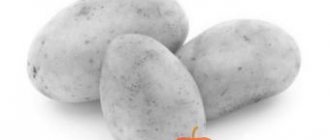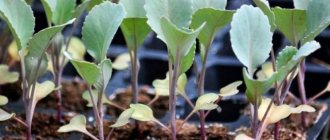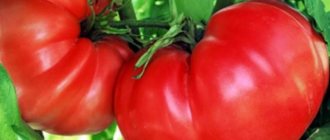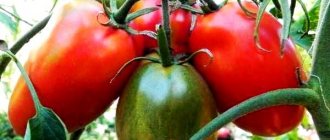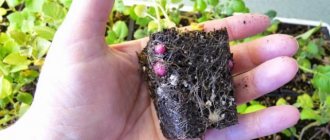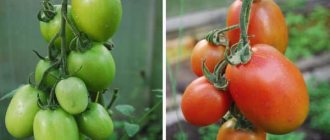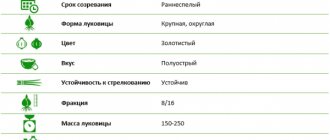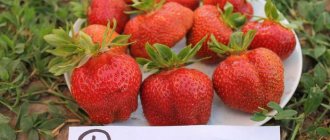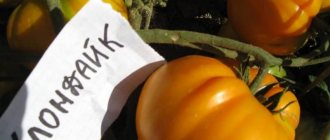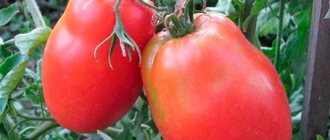Reproduction methods
This is best done by sevkom.
Before sowing, the material is sorted, dried, diseased and rotten bulbs are removed. The sorted material is divided into three groups, according to fractions. The sets set aside for planting are dried for several days, then warmed up. Before planting, you should also soak the seeds in warm water with the addition of manganese to protect the planting material from diseases. After this, the seedlings are washed and can be considered ready for planting.
Read more: Pomegranate indoor care at home, how to grow a detailed description
Experts assure that the smallest fraction of sowing is best suited for planting, as it produces the highest yields.
The sets set aside for planting are dried for several days, then warmed up. Before planting, you should also soak the seeds in warm water with the addition of manganese to protect the planting material from diseases. After this, the seedlings are washed and can be considered ready for planting.
Harvest
Bamberger's bulbs do not grow very large, 80-100 grams each. This can hardly be considered a disadvantage, because medium-sized vegetables are more convenient to use than large ones.
To collect a decent harvest from the area, you need to choose a planting method that is not too sparse: 20 cm between rows, 8 cm in a row between the bulbs of the set. In this case, the yield will not be lower than other varieties.
You can get even greater benefits if you thicken the planting twice and then pull the onion onto the feather.
Description and characteristics of the Bamberger onion variety
This is a new generation species used for spring planting to produce greens and turnips. The scales are yellow in color, the inner part is fleshy and white.
The mid-early variety produces a small number of green arrows and has good taste characteristics. The bulbs are round in shape, weigh from seventy to eighty grams, and are perfectly adapted for long-term storage. Maximum yield can be achieved if you plant onion sets.
The plant successfully resists major diseases, but can be affected by onion fly larvae.
Bamberger bow close up
Bamberger onions are demanding in terms of soil fertility. In this regard, for its cultivation it is better to use areas with sandy loam and light loam. The acidity of the soil, which should be neutral, is also important when growing. Placing onion beds in damp lowlands is not recommended. This may affect the rate of ripening and the appearance of fungal formations.
Advice from experienced gardeners
Farmer tips for growing Bamberger:
- Cover the soil between the rows with mulch. This will help avoid damage to the bulbs and leaves when cultivating the soil and minimize the risk of developing certain bacterial diseases.
- Cover newly planted plants with agrofibre or spunbond - this will keep them warmer. In addition, the non-woven material hides the smell of onions from pests.
- Plant carrots nearby - they repel onion pests.
Exotic orange - fruit or berry? Varieties of evergreen trees and their descriptions, benefits and harms of the plant
How to store?
Bamberger onions differ from other varieties in their high keeping quality. When stored properly, the bulbs do not sprout, do not rot, and do not lose their taste. The fruits are placed in nets, wooden boxes or plastic containers. The storage room should be dark, cool and well ventilated. The optimal temperature is 3 – 10°C.
Collected bulbs should not be stored near walls or on the floor. Containers should be placed on shelves or pallets.
Bamberger onions are easy to care for, have high yields, a long shelf life and good taste. This variety is suitable for growing in any climatic conditions.
Advantages and disadvantages
Values:
- excellent taste and presentation;
- dining versatility;
- low susceptibility to pathogens and parasites;
- suitability for cultivation in different climates;
- ease of cleaning and cleaning;
- long shelf life (until the spring season);
- cold resistance;
- heat resistance;
- not afraid of temperature changes.
Minuses:
- does not like shading and compaction of plantings;
- arrows may appear;
- During storage, the top scales may fall off.
Variety care
It comes down to moderate watering, periodic loosening of the soil, and constant weeding.
Caring for onions as they grow is the key to getting a good harvest. It is necessary to ensure access to oxygen and to destroy the crust that forms around the growing bulbs through periodic loosening. First - before germination, then - once a month is enough. Constantly remove weeds that interfere with the normal growth of the cultivated plant.
While the feather mass is growing, the onion needs frequent watering and feeding. As soon as the neck begins to dry out, the lower underground part begins to develop intensively, moistening and fertilizing are stopped.
For harvesting, choose sunny weather, focusing on the condition of the bulbs, and not on the calendar.
Watering
Watering of onions is carried out throughout the entire period of its active growth, until the final ripening of the “turnip”. The frequency of moisturizing depends on many factors, in particular weather conditions. Moderation and regularity are important. At first - 2 times a week, starting in mid-summer - the frequency decreases to avoid excess moisture, which slows down the growth of the bulbs. Two weeks before the start of harvesting, watering stops.
Moisturizing and fertilizing can be done using herbal infusions, mullein solutions, and chicken droppings.
Top dressing
Onions prefer organic fertilizers as top dressing. Excess mineral salts are harmful to it. You can carry out root and foliar feeding several times during the season.
The first fertilizer is produced half a month after planting. Use liquid chicken droppings and manure substance (at least 10 liters per square meter). A month later, the following fertilizing is carried out - nitrogen-containing minerals are added. The third time, after the same period of time, fertilizers containing a lot of potassium are applied.
Growing feathers need a lot of nitrogen. In the absence of organic matter, it is recommended to spray the onions with a solution of urea and ammonium nitrate.
Protection from diseases and pests
During the selection process, onion resistance to the following influences was instilled:
- Shooting.
- Fungal diseases.
- Damage by pests - onion nematode and onion fly.
This link will tell you about the onion fly.
The Bamberger variety tolerates negative external influences well and is slightly susceptible to them.
Winter hardening, pre-treatment, disinfection strengthens its immunity to both powdery mildew and various pathogens.
Diseases and pests
Downy mildew is considered the main disease of onions. The disease can be identified by a characteristic gray coating on the affected foliage. Fortunately, our onion variety perfectly resists this disease.
Another dangerous manifestation is neck rot. Infection occurs even when the crop is ripening, and the disease finally manifests itself during storage.
Bamberger onion in the garden close-up
Harmful parasites that can infect onions include nematodes and onion flies.
To avoid such troubles as much as possible, onions should be planted early and sprayed using Diazon or Borei preparations.
Onion culture is susceptible to many fungal, viral and bacterial diseases. Here are the most dangerous of them:
- Yellow dwarf disease is a viral disease that appears as yellow streaks on the basal leaves. The affected leaves lie on the ground, and the bulb remains small and cannot withstand winter storage. The virus is transmitted from plant to plant by aphids. Transmission of the virus from year to year occurs through infected bulbs. The virus is not transmitted through infected seeds. Prevention and control measures: planting healthy planting material, using insecticides to control the aphid population, eliminating affected plants from the crop. There is no cure.
- Bacteriosis - in diseased plants, the stems develop poorly, and wet rot appears at their base, the bulb can completely rot. The disease overwinters in plant debris and spreads through water, wind, people, and tools. Prevention and control measures: avoid overhead irrigation; after the first signs of the disease appear, use fungicides (Copernico Hi Bio, Funguran OH 50 WP, Melody Compact 49 WG).
- Peronosporosis - has a fungal nature, the disease affects the bulbs, seed shoots and leaves. The first symptoms appear on the leaves in the form of elongated spots from light green to yellow, on which grayish-purple fluff forms. The affected tissue softens, the leaf dries out, falls off and rots. The optimal conditions for the occurrence of the disease are high humidity for at least 10 hours and temperatures above 12...18°C. Prevention and control measures: removal of plant residues from the previous year of cultivation, balanced soil fertilization, correct crop rotation (onions can be planted in the same bed after 3 years), treatment with contact systemic fungicides (Polyram DF, Dithane M45, Acrobat MZ 90/600 WP", "Aliette 80 WG", "Equation Pro", "Topsin 500 SK").
- Botrytis is a fungal disease that appears on leaves and bulbs as white spots in which the tissue dries out. In humid conditions, a gray powder appears in the affected areas. Mature plants may have basal leaf rot followed by bulb rot. Black sclerotia appear in destroyed areas. Transmission occurs through spores of a fungus overwintering in the soil or in plant debris. Prevention and control measures: burning or deep plowing of plant debris, correct crop rotation and fertilization, treatment during the growing season with chemicals (“Bravo 500 SC”, “Rovral 500 SC”, “Teldor 500 SC”, “Switch 625 WG”) .
- Fusarium is a fungal disease that affects roots, bulbs or leaves damaged during field work or attacked by pests. The disease is very difficult to detect. The leaves have a slight yellowing in the upper part, and diseased bulbs have rot at the bottom, in the root area. Diseased roots have white spots, which subsequently turn black, and the root system is destroyed. Prevention and control measures: growing resistant varieties, using healthy planting material, chemical treatment of plantings with Topsin 70 WDG and Topsin 500 SC. Prepare a solution of 0.05-0.1% (5 or 10 g per 10 liters of water) and spray each plant with 0.5 liters (of solution).
The most dangerous crop pests:
- Secretive proboscis - larvae and adult insects sit in the spaces between onion leaves. They feed on onion juice, causing serious damage to young plants. As prevention and control measures, onion beds are treated with one of the following preparations: “Mospilan 20 SG” (1.5 g/6 l of water), “Actara 25 WG” (0.2 kg/ha), “Confidor Energy” ( 1.3 l/ha), “Faster 10 EC” (2 ml in 6.6 l of water), “Karate Zeon 50 CS”.
- Bulb nematode - attacks stems and bulbs. The pest appears in the spring. Nematode infection occurs through soil or infected seeds. In diseased plants, the bulbs remain small, irregularly shaped and cracked. Prevention and control measures: correct crop rotation (in case of soil bulb nematode infection, the crop can be returned to the same field after 4 years), removal of diseased plants from the site, growing resistant varieties. Soil treatment using Force 1.5 G (15 kg/ha) or Basamid granules.
- Onion fly - produces two to three generations per year and feeds in the surface layer of soil. In spring, females lay eggs underground near onion roots. The larvae enter plant tissue, where they gnaw through many tunnels during the feeding process. In case of severe pest infestation, the plants die. Prevention and control measures: collection and destruction of plant residues after harvesting, carrying out treatments during the growing season with the following preparations: “Decis Mega 50”, “Confidor Energy”, “Calypso 480 SC”, “Karate Zeon 50 CS”.
Description of onion set
“Bamberger” onion is a representative of sweet varieties of onions, bred by breeders from Holland. It ripens in the middle period. Suitable for cultivation in all territories of Russia.
Bamberger onions are suitable for long-term storage
The bulb has a characteristic rounded-elongated shape, which is very convenient during slicing. The weight of each onion reaches an average of 80 grams. The peel has a yellow-brown tint. The pulp underneath is white and very juicy, the taste is harmonious, sweet or slightly spicy.
To plant Bamberger onions, carefully selected seed is taken: the appearance of the set is without damage, without rotting or traces of mold, the size of the onions is the same (at least two and no more than four centimeters), the golden crust rustles in the hands, a healthy set has the smell of dust.
Large bulbs will produce arrows, and small ones will produce low yields, so they are especially careful when selecting seed.
Let's describe the Bamberger bow according to its main characteristics:
- sweet variety, mid-season;
- rounded-elongated shape;
- excellent keeping quality.
The Bamberger bow has an oblong shape
The planting material is resistant to seasonal cold snaps. The Bamberger variety belongs to the mid-early category.
Note. There are also mid-late varieties grown in certain regions.
Note. The maximum size of the Bamberger bulb fruit can reach 10 cm in length and weigh 100 grams.
Peculiarities
New developments by German breeders have led to the emergence of such a vegetable as the Bamberger onion. The description of the variety, reviews of which are left by domestic summer residents, speaks of a lot of its advantages. It should be noted that it has good taste. "Bamberger" refers to the sweet varieties of onions. It does not have the sharp pungency and bitterness that is inherent in many modern varieties of vegetables.
Thanks to its special taste, Bamberger onions are ideal for delicious salads and canning. It goes well with cucumbers and tomatoes when rolled into jars. It is also used to prepare squash caviar.
In addition to its taste, the presented variety has high storage properties. It can be prepared for the winter. It is planted in the ground in the spring on turnips or greens. The inner fleshy part is milky white in color, and the outer dry layers are yellow-orange.
Description of the variety
The Bamberger variety is characterized by an elongated bulb shape, mild taste and bright aroma. This onion can be eaten fresh, added to hot dishes, salads and preserves.
Origin and development
Bamberger onion was developed by Dutch agronomist breeders. This is a relatively young variety - it began to be actively cultivated only in the 21st century.
Chemical composition, trace elements and vitamins, beneficial properties
Onions contain:
- proteins fats carbohydrates;
- mono- and disaccharides;
- alimentary fiber;
- vitamins A, C, E, PP and group B;
- essential oils;
- potassium, calcium, phosphorus, iron, fluorine;
- flavonoids with antioxidant effects.
The vegetable is useful for colds, because it is able to fight inflammation and destroy bacteria, has a beneficial effect on blood vessels and blood composition, helps strengthen the intestines and helps in treating the liver.
Ripening time and yield
Medium early variety. The crop is ready for harvest approximately 90 days after planting, i.e. in late August or early September.
The maximum Bamberger yield is observed when planting onion sets - from 1 sq. m harvest about 6 kg.
Disease resistance
The variety is resistant to:
- powdery mildew;
- rot;
- thrips;
- onion nematode and flies.
Dutch onion sets have high immunity, but planting material from Chuvashia is less resistant to diseases, pests and frost, although it is cheaper.
Characteristics of the bulb, description of appearance, taste
The bulbs are elongated, slightly elongated, small - they grow up to 10 cm in length and weigh on average 60-80 g. They are covered with yellow-brown husk. The pulp is snow-white, juicy with a slightly sweet, but not cloying taste. The heat is more in the aroma than in the taste.
Regions for cultivation and climate requirements
The Bamberger variety is unpretentious to climatic conditions and is successfully cultivated in almost all regions of the country.
This is interesting: Caring for the Zephyr strawberry variety: we understand all the details
Main characteristics
The variety is not officially registered in the State Register of the Russian Federation, and there is also no reliable data on its licensing and certification in foreign sources. From advertising descriptions and reviews of amateur vegetable growers from different countries, the most significant features can be identified:
| Parameter | Characteristic |
| Culture | Onion (Allium cepa L.) |
| Variety | "Bamberger" ("Birnformige") |
| Ripening time | Mid-early or mid-late: reaches technical ripeness 90-100 (110-130) days after emergence |
| Plant type | Sweet or semi-spicy |
| Purpose | Universal |
| Growing conditions | Commodity production, homestead cultivation |
| Productivity | High: 7-8 kg/m2 (up to 10 kg/m2) |
| Bulb weight | 60-80 g (maximum – 140-170 g) |
| Form | Elongated oval |
| Scale color | External (dry) yellow-brown; internal (juicy) – white |
| Taste qualities | Excellent: sweet or semi-sharp taste, juicy flesh |
| Storage duration | 4-6 months |
| Registration in the State Register of the Russian Federation | Absent |
The weight of one onion is on average 60-80 grams, individual specimens gain twice as much
Storage Features
Bamberger onions produce excellent harvests, which you need to know how to properly preserve. As soon as the cleaning is completed, the heads are sent to dry in a warm, well-ventilated room. The recommended temperature for drying is 30 °C. In good and sunny weather, you can pour the bulbs onto a prepared tray right outside.
When digging up the crop, it is recommended not to trim the feather. In the future, with its help, Bamberger can be tied into buns or braids. This method is very convenient for further storage. But the roots must be cut off after drying. Before being sent to storage, each bulb is carefully inspected. After all, even a couple of rotten specimens can ruin half the harvest.
If not only Bamberger, but also other varieties of onions were grown on the site, then in no case should they be sent for storage together. Each variety must be stored separately. In the basement, where it is recommended to send the harvested crop, the recommended temperature is maintained at +3–10 °C, and air humidity is 70%. If there is no basement, then you can save the Bamberger on an insulated and glazed balcony.
Both wooden or plastic boxes with holes and wicker baskets work well for storing onions. Mesh bags are an excellent option. Cardboard boxes are also used, but they are perforated. Containers must be placed on shelves or pallets, and in no case should they be stored on the floor or near walls.
Reviews from experienced gardeners about Bamberger onions entice many beginners to try this particular variety on their site. As a rule, their experiments turn out to be successful. If you follow simple technology, the harvest will be ensured.
Shape and taste
The Bamberger onion set has a recognizable shape. The description of the variety, reviews of which are provided by our summer residents, speaks of a highly elongated turnip shape. Some inexperienced farmers may confuse it with other varieties. However, this vegetable has the most elongated shape, which is not characterized by roundness even at the bottom of the bulb.
This shape makes it easy to clean and also prevents rotting at the neck.
The taste of onions of the presented variety also deserves special attention. There is no bitterness in the pulp. There are still burning notes in it, but they rather add flavor to the onion. This is ideal for fresh salads. It is soft and crispy. The pulp is very juicy. According to reviews from experienced farmers, this variety is superior in taste to many other salad varieties.
Rules for caring for Bamberger onions
For a crop to fully develop, it requires high-quality care, taking into account all the characteristics of the variety. Only this approach will help reap a bountiful harvest.
Loosening the soil and weeding
To get a good harvest, it is important to systematically loosen the soil. This procedure helps get rid of the crust that forms on the surface of the earth after watering or precipitation.
Thanks to this, it is possible to saturate the plant with oxygen and nutrients.
Important! Loosening should initially be carried out before germination, after which - once a month. Of no small importance is the constant removal of weeds, which interfere with the normal development of the crop.
Feeding
When it comes to fertilizers, you should give preference to organic ones. Excessive amounts of minerals harm the culture. Root and foliar feeding can be done several times during the season. The best option would be mineral products that contain nitrogen, potassium and sulfur.
For the first time, the bushes are fed 2 weeks after planting. For this purpose, it is worth using liquid chicken droppings or manure. For 1 square meter you need to apply at least 10 liters of such fertilizer.
After 1 month, you need to use mineral products containing nitrogen. The third time it is worth using products with a large amount of potassium.
Important! Growing feathers need sufficient nitrogen. They can be sprayed with a solution of ammonium nitrate or urea
Watering
Onions should be watered during the entire period of active growth. The frequency of soil moisture is determined by many factors - primarily climatic conditions. Watering should be moderate and regular.
- At first, this should be done twice a week.
- From mid-summer, the frequency should be reduced to avoid excess moisture, which slows down the development of the bulbs.
- A couple of weeks before harvesting, stop watering the plant.
The plant needs to be watered on time
Rules of care
During the entire growing season, plants need to be properly cared for: loosened, fed, protected from diseases and pests, and watered. It is proper care that determines the quantity and quality of the harvest.
Irrigation rates
Plantings should be watered as needed. Determining whether plants need irrigation is quite simple: if the soil in the bed at a depth of 10 cm is dry and crumbly, watering is needed; if the soil at this depth is still wet, irrigation can be postponed for several days. Watering is carried out in the morning, before the onset of the afternoon heat. It is not advisable to water the onions in the evening, since they will not have time to dry before sunset.
And drops of water on the leaves are an excellent breeding ground for the development of various fungal diseases. Bamberger requires abundant irrigation in the first month of cultivation, a little later the frequency of watering is significantly reduced. About 2 weeks before the expected harvest, soil moisture completely stops.
Loosening the soil and weeding
Caring for plantings also includes timely loosening and weeding. They need to be carried out every 10-12 days or more often as the field becomes clogged with weeds. Loosening the soil allows you to keep the soil between the rows clean of weeds, and makes it light and permeable. After each loosening of row spacing, the plants grow significantly.
For manual weeding, you can use a regular hoe with a blade of suitable width or a medium-sized flat cutter. If a lot of onions are grown, and a large field is occupied during the growing season, it is more advisable to significantly increase the row spacing when planting planting material. It must correspond to the equipment (cultivator, tractor) that will be used to cultivate the land.
Top dressing
At the stage of appearance of 4 adult leaves on the plants, the bulbs can be fed with nitrogen. To do this, you can use nitrogen in granules, diluted in water for irrigation, or liquid organic fertilizers, such as fermented nettle infusion or a solution of chicken manure.
Description
Bamberger attracts attention with its taste characteristics, which are similar to salad varieties
Appearance
Let's look at the characteristics of the variety in more detail:
- shape – round, elongated;
- fruit sizes are average;
- fruit weight – up to 100 g;
- the length of one head is up to 10 cm;
- pulp color – white;
- husk color – yellow-brown;
- taste – sweet, no pronounced bitterness;
- yield – 6 kg per 1 sq. m;
- Depending on the region of cultivation, it can be early-ripening, mid-ripening and mid-late.
Advantages and disadvantages
Vegetable growers highlight the following advantages of the variety:
- unique taste qualities;
- excellent shelf life - can be stored almost until the next harvest;
- convenient bulb shape;
- high level of productivity;
- versatility of use;
- peels off well;
- quite resistant to diseases and pest attacks;
- Suitable for planting in different climatic zones.
But there are also some disadvantages:
- the husks fall off during storage;
- planting material is quite expensive;
- large bulbs can shoot;
- The harvested crop does not tolerate dampness well.
Reproduction methods
There are several ways to propagate this onion:
Sevcom. You can grow seed material yourself or buy it at a specialty store. Vegetative way
In this case, the teeth that form on adult bulbs are used - they are carefully cut off, germinated and planted in the soil
Reviews
- I really like the variety. During cultivation, the Bamberger variety was never affected by disease. Regarding the onion fly, I want to say that if you properly cultivate the soil and observe crop rotation, then this pest is not dangerous to plants. I consistently gain 5-6 kg. beautiful bulbs from 1 m2. The taste of this variety is also very good. I recommend this variety to all gardeners.
- I tried to grow the Bamberger variety for the first time last year. I'm pleased with the variety. The beautiful, large onions taste great and store well. During cultivation, the variety is not very whimsical. But if you want to get a good harvest, then don’t skimp on fertilizer and care. The yield of this variety was 5.6 kg. from 1 m2. I use the harvested crops in preparing various culinary dishes. I like the variety. Try it - you won't regret it.
- I like this variety because of its consistently high yields and relatively long storage period. During cultivation, the variety is very responsive to high-quality soil cultivation and timely fertilizing. The grown bulbs have a very good taste. Throughout my cultivation of this variety, the plants have never been affected by diseases or pests. This is understandable because the variety is of Dutch selection. I recommend that all gardeners try this variety. Good luck.
Cleaning and storing seedlings
The Bamberger variety sets are harvested in mid-August. At this time, the bulbs have a diameter of 1.5 to 2.5 cm. The main sign of the maturation of the sets is the lodging of the feathers of the bulbs. After this, you can start cleaning. Harvesting the seeds consists of several stages:
- The seedlings are carefully dug out of the soil or pulled out.
- The planting material extracted from the soil is laid on the field in strips to dry. This drying period lasts 24 hours.
- The dried seed crop is collected and moved under a canopy or other covering. There the sets are spread evenly in a layer of 8-10 cm. They are left in this position for 4-5 days. To ensure uniform drying, the spread out seedlings are stirred once a day.
- Next, remove the leaves and root system from the bulbs. In addition, during the pruning process, lumps of earth that have dried on the bulb are removed.
- The cleaned and modified planting material is placed in a basement or shed with an air temperature of +3 +4 degrees Celsius. It is best to store seedlings in winter in baskets, wooden boxes or on a wooden floor.
Harvesting and storage
Ripe onions can be harvested from mid-August. The turnips are dug up and dried under a canopy for a couple of days until the scales turn yellow and the necks dry out.
The onions are sorted, the foliage and roots are trimmed. The sorted harvest is stored in storage.
The Bamberger variety is considered unpretentious to grow. If the planting material was prepared with high quality, the soil composition is suitable in terms of acidity, and proper care is organized, you are guaranteed a harvest.
Onions do not belong to the main food crops, such as wheat, rice or potatoes. However, not a single kitchen in the world can do without it.
Onions cannot complain about lack of attention from breeders. Many of its varieties have been developed, in which the vegetable appears either in dark yellow robes, sometimes in white, and sometimes even in purple; where it can taste bitter, but it can also taste sweet
And recently a new variety was developed - the Bamberger onion, which has already received the kindest words from vegetable growers.
Planting and replanting perennial onions
Despite the ease of care and the crop’s undemanding nature for the gardener’s attention, there is a system and rules for planting perennial onions. To avoid problems and reap a good harvest every year from the same place, it is necessary to properly prepare the soil and plant the plants correctly.
Site preparation
Agronomists involved in growing perennial onions believe that soil preparation should begin in the fall. The optimal parameters for soil readiness for planting crops are:
- without groundwater;
- light soil composition;
- slightly acidic or neutral soil – pH 6-7.
To achieve such a balanced indicator, the following procedures are carried out:
- thorough digging of the site;
- removal of weeds, the proximity of which is detrimental to perennial onions;
- application of phosphorus-potassium and organic fertilizers.
In the spring, before planting, it is necessary to apply nitrogen fertilizer, weed the beds and deeply loosen the soil to 15-20 cm.
Planting perennial onions
There are practically no strict restrictions on the timing of planting onions - they are grown in autumn, summer and spring. Perennials are planted by seeds or by dividing the bush; the choice of method depends directly on the crop variety.
Propagation by seeds
Typically, the seeds of perennial onions are planted in the ground in the spring or before winter. This directly affects the speed of germination and further development.
Spring sowing
When sown in open ground, the sprouts sprout no earlier than 2 weeks after planting. Further development proceeds slowly, periodically requiring the attention of the gardener.
Experienced agronomists, when planting seeds of perennial onions, resort to the home seedling method to avoid a protracted period of germination in open ground. This procedure consists of several stages and begins in March:
- Treatment of perennial onion seeds: washing in potassium permanganate, soaking in water at room temperature for 24 hours, drying.
- Surface planting of seeds in seedling boxes.
- Growing seedlings at home for 2 months.
- Transplanting the finished seedlings into the beds on the site in May.
Before transplanting perennial onion seedlings into open ground, the soil is loosened, drained and fertilized as necessary.
Winter sowing for early greenery
To obtain a quick harvest of feathers, they resort to winter sowing in early spring. When the soil temperature drops to 3-4 degrees in the fall, densely sow the seeds of perennial onions. For effective cultivation of early feathers, the usual seed rate is increased by 20-25%.
With this planting in spring, seedlings appear 10-15 days earlier. This method is also convenient because low temperatures during feather growth in early spring do not allow the crop to bolt quickly. This allows the gardener to collect high-quality succulent feathers for a long time.
Vegetative propagation
Some types of onions are capable of propagation only by vegetative means. There are varieties of perennial onions that do not form a seed box or it is unsuitable for propagation. The vegetative method involves 2 methods of propagation: dividing the main rhizome and using the aerial upper part of the plant.
Root division
Typically, gardeners divide earthen bulbs in mid-spring or at the end of summer. To do this, take the rhizomes of only adult representatives of perennial onions. The bulbs are divided so that each planting material contains at least one mature root with a well-developed underground system. Planting occurs in beds according to a 20x70 cm pattern, in which the perennial onion bush is deepened 8-10 cm into the ground.
Using bulbs
To propagate many varieties of perennial onions, bulbs, daughter and sighting bulbs are used. As the flower shoot grows, it gives birth to an inflorescence in which bulbs are formed. The development of the feather does not end here - the arrow from the bulb stretches further, forming another floor of air bulbs after 20-30 cm. Each of these aerial inflorescences can contain up to 30 bulbs.
It is considered optimal to plant such material in open ground immediately after the autumn harvest. To do this, before the onset of frost, plant the bulbs in the ground to a depth of 5-6 cm at a distance of 15-20 cm.
Many gardeners, having adopted the method of growing perennial onions in China and Japan, plant perennial onions in greenhouses or on windowsills. To do this, when planting onions in furrows, they are additionally hilled to a height of 8-10 cm. This leads to whitening of the base of the plant and a delicate taste of the feather. When planting multi-tiered onions in such insulated conditions, their feathers grow more juicy and reach a height of 40-45 cm.
Preparing the landing site
The presence of sun and warmth are important conditions for good growth and development of onions.
A sufficiently lit, wind-protected bed is an ideal place. The soil and the absence of constant shade are of great importance. Bamberger onions prefer light sandy loam fertile soil. It belongs to the winter varieties of onions, usually planted in late autumn, before the onset of persistent cold weather. This is done two weeks before the first frost so that the seedlings have time to take root. The moisture that the bulbs will absorb during the winter, become saturated with it, will increase taste and juiciness.
Onions can also be sown in early spring. The earlier the better. You should pay attention to one important point - the soil should warm up and not be cold. Otherwise, the bow will shoot arrows.
The soil is dug up in advance and fertilized with organic fertilizers (you can use compost, mullein infusion, rotted leaves, wood ash). The bulbs are planted at a distance of up to 30 cm from each other, to a depth of 5 cm .
To retain moisture and avoid its excessive evaporation, mulch is laid. When onions are planted not only for the purpose of harvesting for the winter, but for the sake of greenery, they can be planted in a row, then thinned out. In this case, the distance between the bulbs is about 10 cm. As the feathers are pulled out, the distance between the plants increases, which affects the further formation and growth of the underground part - the turnip.
Variety care
To obtain a tasty, rich harvest, any planted garden crop must be properly cared for. Loosening, according to experts, is one of the most important procedures that must be carried out even before the start of germination of the planted planting material. By doing this, the gardener will prevent the unwanted formation of a soil crust. In addition, it is loosening that ensures sufficient oxygen access to the germinating bulbs. Subsequently, the soil requires digging approximately once every thirty days. Simultaneously with loosening, weed removal must also be carried out.
Sustainability
Farmers claim that the super-variety Bamberger is highly resistant to adverse environmental influences and microorganisms. Varieties of onions previously bred through selective breeding are susceptible to various diseases, as well as deformations. The new variety does not have such negative qualities.
Bamberger's resilience comes in three types. It is not susceptible to bolting even when planted early. Also, the presented variety is resistant to fungus. It is not afraid of pests, for example, powdery mildew, onion fly larvae, thrips.
Dutch-made bulbs are known to be more resistant. It is suitable even for cold regions of our country, for example, Siberia. Chuvash set grows well in regions close to the Volga region. The cost of Chuvash sets is less than that of Dutch products.
Basic growing rules
Soil preparation
The Birnformig variety grows well in fertilized sandy loam soil or light loam.
It is advisable to select a site that is not shaded, with good natural drainage. Previous varieties must be:
- green manure;
- tomatoes;
- peas;
- pumpkin;
- cabbage.
The soil begins to be prepared in the fall:
- The soil should be well dug up with added organic fertilizers, which can be used as rotted manure.
- In spring, a small amount of nitrogen fertilizer is applied to the soil, but not deeply, so that the weak root system of the plant can reach it.
Planting by seeds
Birnformig onion is a late ripening variety. This variety can be grown from seeds only in the southern regions of Russia under favorable weather conditions.
- For planting, grooves with a depth of 5 to 7 cm are cut with a hoe. A distance of 15 cm is left between the furrows.
- A thoroughly mixed composition of 5 parts of rotted manure and one part of any superphosphate fertilizer is distributed over the entire bottom of these depressions (it is advisable to use monophosphate with a phosphorus content of up to 20%).
- Water the grooves with warm water, after which the seeds are placed no deeper than 3 cm. Seeds are consumed at the rate of 3-4 g per 1 square meter. m.
- The grooves are filled with earth, but are not compacted.
- Since sowing is best done in early March, it is advisable to cover the beds with plastic film before the first shoots appear.
Bulbs
It is better to buy onion sets made in Holland. If it is not known in what conditions the product was stored, immediately after purchase the sets must be dried. Before planting, it is better to store the sets at a temperature no higher than 20°C, and the day before sowing, the bulbs should be heated on a stove or radiator to +35°C.
Onion sets bought in a store usually do not need pre-planting treatment, but if there is no heating at your summer cottage, the sets can be warmed up by dipping them in a hot solution of potassium permanganate for 15-20 minutes. For better growth, experienced gardeners advise treating the seed with Humilos.
- Furrows for sowing are made to a depth of no more than 5 cm, so that after adding rotted manure and filling it with soil, the top of the sowing is not covered with soil.
- The seedlings are planted at a distance of 10 cm, and a distance of 20 cm is left between the beds.
- After planting, the soil is mulched with hay or sawdust.
- On top, as when sowing seeds, you can put plastic film until the first shoots appear.
Care
Many gardeners have already appreciated the Birnformig variety for its ease of care. But to get a good harvest, it is necessary to carry out general agrotechnical measures.
- If the soil was well prepared in the fall and mulched after planting, then weeding and loosening can be done once a month without leaving uprooted weeds in the garden bed.
- At the beginning of the growing season, watering is carried out once every 3-4 days, taking into account natural precipitation (the soil should not be over-moistened). In the second half of the growing season, the number of waterings is reduced to once a week, and 3 weeks before the expected harvest (late August - early September), irrigation is stopped completely, allowing the bulbs to ripen well.
- When feeding this variety, it is better to combine organic and mineral fertilizers according to the following three-time scheme:
- the first feeding is carried out 15 days after planting, using solutions of mullein or chicken droppings;
the second feeding is carried out 20 days after the first using nitrogen fertilizers (ammonium, sodium, calcium nitrate, ammonium sulfate and carbonate, ammophos or urea);
- the third is carried out 20 days after the second using superphosphate and mineral fertilizers containing potassium.
After this, the Birnformig variety is no longer fed.
The main stages of preparation and placement in open ground
- Damaged seeds are discarded, leaving the best ones.
- Before sowing, soak the seeds in a solution of Epin or Zircon for a day at the rate of 5 ml of the drug per 5 liters of water.
- Furrows are made to a depth of 5–7 cm, with a row spacing of 15 cm.
- Rotted manure and superphosphate (50 g of manure and 10 g of superphosphate) are placed at the bottom of the furrows.
- Seeds are sown at the rate of 3 g of seed per 1 square meter and buried 2-3 cm.
- Fill the grooves, tamping lightly.
Landing
Before planting Bamberger, read the planting rules - how to prepare the site and the planting material itself.
Conditions
It is best to plant Bamberger onions on sandy loam soils, and choose a place that is well lit and without drafts. This variety is planted before winter or in early spring. If planting is carried out in winter, then select the smallest bulbs.
Also, when growing this variety, follow the rules of crop rotation - in the place where the onion grew, it cannot be planted for 3 years. It is better to select those places where legumes, tomatoes or cabbage grew in previous seasons. An excellent neighbor for Bamberger is carrots.
Soil preparation
Before planting onions, prepare the soil - dig up the soil and add fertilizer, as the soil must have a loose structure with a sufficient amount of nutrients. To do this, follow these steps:
- carry out weeding (to a depth of 2-3 cm);
- remove all weeds;
- if there are more than 5 perennial weeds per 1 square meter growing on your site. m, carry out chemical control against them - use Roundup and Hurricane herbicides (30 ml per one hundred square meters);
- scatter organic fertilizers over the soil surface - rotted manure or compost (from 5 to 9 kg per 1 sq. m);
- a few days after fertilizing, plow the area - the optimal depth is 15-18 cm;
- level the plowed area using agricultural implements - if once was not enough, then repeat the harrowing;
- Divide the prepared soil into holes (the number depends on the scale of planting).
Preparation of seed material
Since there are 2 methods of growing Bamberger, there are also several preparatory features for preparing seed material.
Preparing the sets
Dry the purchased material by placing the bulbs in a warm room. Even if you grew the seed yourself, still warm it up before planting.
Warm up the planting material gradually:
- keep it in a room with an air temperature of about +20 degrees for several weeks;
- a day before planting in the soil, transfer the seedlings to a room where the temperature will be 15-20 degrees higher.
This speeds up the germination of onions and also prevents the appearance of arrows. If you do not have time for such a lengthy process, you can speed it up by dipping the bulbs in hot water for 15-20 minutes before planting in the ground. Also, to accelerate growth, stimulating drugs are used - Rost-1 or Gumisol (instructions for use are on the package).
The set should be dense, golden in color and rustle in your hands. It’s good if all planting material is approximately the same size. The most suitable set size is 2-4 cm. If the size is smaller, the bow will not give the desired result; if it is larger, it may shoot.
Planting seedlings for winter is carried out 20 days before the onset of frost. Furrows 3-4 cm deep are made on the site, and the distance between them is 20-30 cm. The seedlings are planted at intervals of 8-10 cm, after which they are covered with soil and mulched.
Preparing and planting seeds
If cultivation is carried out not by bulbs, but by seeds, then they are also prepared for planting:
- Sort through the seeds, separating out any empty, damaged or rotten ones.
- Before sowing, immerse the seeds in a solution with growth stimulants - take Vympel or Emistim for this. To prepare a solution, just add 5 ml of growth stimulants to 5 liters of water.
- Immerse the seeds in this liquid for 24 hours, and then immediately plant them in previously prepared holes.
When sowing seeds, furrows are made to a depth of 5-7 cm and watered abundantly. The distance between them is 15 cm. Before sowing, put rotted manure (50 g) and superphosphate (10 g) at the bottom of the furrows, after which the seeds are sown to a depth of 2-3 cm (3 g per 1 sq. m). Then fill the finished rows with soil and lightly compact the soil.
- In Siberia, seedlings are planted in open ground at the end of May. Monitor the temperature before planting - it should be no lower than 8-10 degrees.
- In the Urals, seedlings are planted around mid-May. As in Siberia, wait until the soil temperature is +8-10 degrees.
- The optimal time for planting seedlings for central Russia is mid-April - early May.
Preparations before landing
The Bamberger onion variety is not a capricious plant.
It can be grown using standard technologies, without unnecessary additional work. Immediately after purchase, the seeds are dried and warmed up. There is no need to place the bulbs on a radiator; a warm, ventilated room is enough. The seed laid out in one row is dried on the floor.
Before direct planting, the seedlings are placed for a day in a place with a higher temperature (up to 40 degrees) - to speed up germination and prevent the growth of shoots.
Time does not allow for complete warming up - you can soak the seed for half an hour before direct sowing in hot water (not boiling water!). Then the bulbs are treated with growth-stimulating drugs (for example, using Humisol), and disinfected (using a solution of copper sulfate, potassium permanganate). You can use a weak saline solution. This is done to destroy pathogenic bacteria, microorganisms living under onion scales. They are capable of being activated in the soil and causing significant harm to the young plant and its shoots.
Please note that Dutch-made Bamberger onion varieties do not require pre-treatment and are most preferred when choosing seed.
Before planting, we pay attention to the quality of the seed. Small bulbs (up to 1cm) are not suitable for these purposes - at the end of ripening there will be small “turnips”. Large ones (more than 5 cm) will also not work; they will shoot arrows, bloom, and form seeds. The best size is about 3 cm in diameter. When picked up, it should make a rustling sound and not smell of rot or mold.
This material will tell you about processing onions before planting in the fall.
How to grow onions?
Let's look at the features of growing onions. Reviews from summer residents indicate that it is better to plant Bamberger onions on suspended soils or soils that have light loams. Gardeners should also check the acidity of the soil. The variety will produce high yields on neutral soil, so for acidic soil it is necessary to use special fertilizers before planting.
The Bamberger variety is not planted in lowlands with high humidity levels, because it can slow down the ripening of the bulbs and promote the formation of a fungal infection.
If the onion was purchased at a specialized point, then it must be dried - this will help keep the set in excellent condition.
Self-germination requires that the bulbs be first placed for 2-3 weeks in a warm place with a temperature of +20ºC. The day before planting in pots, the onions are transferred to a room with a temperature above +35ºС.
Warming promotes germination and slows down the formation of shoots. When it is not possible to maintain the specified heating time, it is recommended to place the bulbs in hot water for 20 minutes before planting them in the ground. You should also treat the seedlings with a growth stimulant, which accelerates growth. In addition, the seed is kept in a solution of potassium permanganate or copper sulfate.
The area where you plan to plant onions must be carefully dug up in the fall and fertilized with organic matter. For these purposes, dry substances are used, but not fresh manure.
In the spring, mineral fertilizers are applied to the ground - just do not dig them very deep, because... these substances must be available to the future root system of the plant.
Onions should be re-grown in the same place after 3 years. To obtain a high yield, it is recommended to use areas where cucumbers, cabbage, and tomatoes previously grew.
Planting is carried out in 2 ways: winter or spring. For winter planting, only small bulbs are selected. They are immersed in the ground on the site 2-3 weeks before the onset of the first frost. Spring planting takes place in late April-early May.
Features of the landing process include:
- the sowing should be immersed in the soil to a depth of 3-4 cm;
- the distance between the bulbs should be within 10 cm;
- the distance between rows varies from 20 to 30 cm;
- after planting, the beds are mulched with hay, straw, leaves or sawdust;
- the crop can be covered with film to speed up germination (the cover is removed as soon as the first green sprouts appear from under the ground).
Caring for the Bamberger variety involves the following activities:
